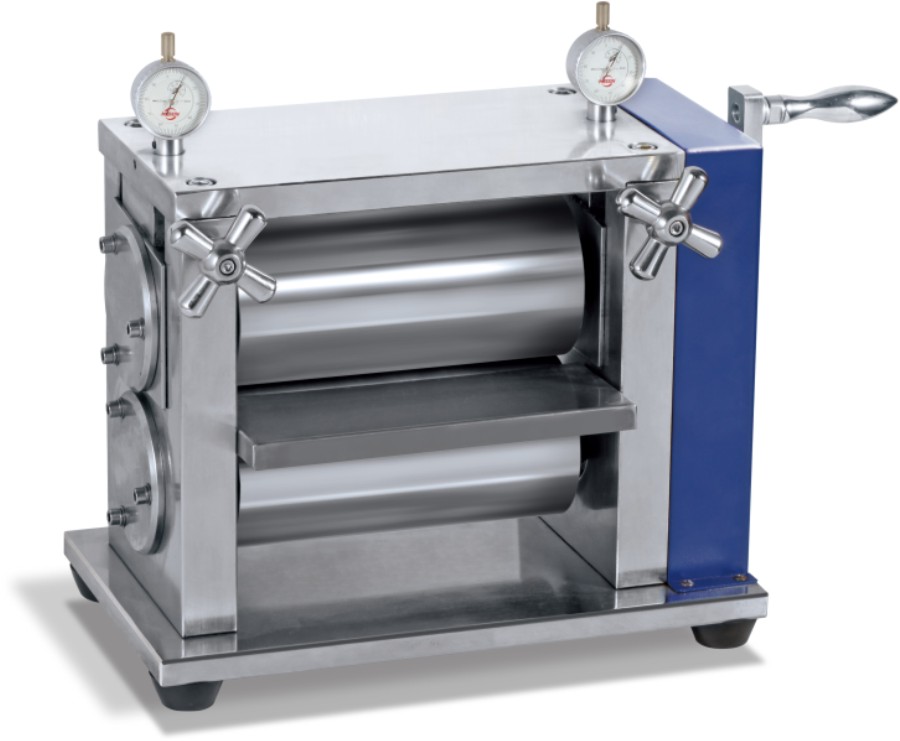- Battery Manufacturing Equipment
- Battery Laboratory Assembly Equipment
- Battery Pack Assembly Equipment
- Sodium Ion Battery Manufacturing Equipment
- Solid State Battery Assembly Line
- Dry Electrode Assembly Equipment
- Supercapacitor Assembly Equipment
- Perovskite Solar Cell Lab Equipment
- Li ion Battery Materials
- Ni / Al / Cu Metal Foam
- Customized Electrode
- Cathode Active Materials
- Anode Active Materials
- Coin Cell Parts
- Lithium Chip
- Cylindrical Cell Parts
- Battery Current Collectors
- Battery Conductive Materials
- Electrolyte
- Battery Binder
- Separator and Tape
- Aluminum Laminate Film
- Nickel Strip/Foil
- Battery Tabs
- Graphene Materials
- Cu / Al / Ni / Stainless steel Foil
- Battery Laboratory Equipment
- Li ion Battery Tester
- Battery Safety Tester
- Battery Material Tester
- Film Coating Machine
- Rolling Press Machine
- Electrode Mixer
- Coin Cell Crimping Machine
- Coin Cell Electrode Disc Punching
- Pouch Cell Sealing Machine
- Pouch Cell Stacking Machine
- Pouch Cell Forming Machine
- Pouch Cell Ultrasonic Welder
- Pouch Cell Electrode Die Cutter
- Cylinder Cell Sealing Machine
- Cylinder Cell Grooving Machine
- Electrode Slitting Machine
- Cylinder Cell Winding Machine
- Cylinder Cell Spot Welding Machine
- Electrolyte Filling
- Type Test Cell
- Other Battery Making Machine
- NMP Solvent Treatment System
- Vacuum Glove Box
- Lab Furnaces
- Ball Mill
- Hydraulic Press
- Laboratory Equipment
- 2024-06-18
Calender Machine for Electrode Manufacturing
A calender machine is a crucial piece of equipment in the production of electrodes for batteries, particularly lithium-ion batteries. It plays a vital role in ensuring the quality and performance of the electrode by controlling the thickness, density, and surface properties of the electrode material.
Working Principle of a Calender Machine
Structure and Components
- Rollers: Typically consists of two or more hard, polished steel rollers through which the electrode material passes.
- Heating System: Some calender machines include heated rollers to aid in the compression and adhesion of the electrode materials.
- Pressure System: Applies precise pressure to ensure the desired thickness and density of the electrode.
- Control System: Advanced calender machines have computer control systems to monitor and adjust parameters such as pressure, roller speed, and temperature.
Calendering Process
- Preparation: The electrode material, usually a coated foil, is prepared and fed into the calender machine.
- Feeding: The material is fed between the rollers.
- Compression: The rollers compress the electrode material to the desired thickness and density. The pressure applied ensures uniformity and removes any air pockets, improving the electrical conductivity and mechanical properties of the electrode.
- Cooling: If the rollers are heated, the electrode may be cooled after calendering to stabilize its structure.
- Winding: The finished electrode is wound onto a spool for further processing or assembly into battery cells.
Advantages of Calendering
- Uniform Thickness: Achieves precise and uniform thickness across the electrode, which is critical for consistent battery performance.
- Increased Density: Improves the density of the electrode material, enhancing its electrical conductivity and capacity.
- Improved Adhesion: Enhances the adhesion of the active material to the current collector, reducing the risk of delamination during battery operation.
- Surface Smoothness: Provides a smooth surface finish, which is essential for the proper layering and stacking of electrodes in battery assembly.
Disadvantages and Challenges
- Equipment Cost: High initial investment and maintenance costs for high-quality calender machines.
- Material Sensitivity: Some electrode materials can be sensitive to pressure and temperature, requiring careful control to avoid damage.
- Operational Complexity: Requires skilled operators and precise control of process parameters to achieve optimal results.
- Scale-Up Issues: Scaling up from laboratory to industrial-scale production can be challenging, requiring significant adjustments and optimizations.
Development Challenges
- Material Compatibility: Developing calendering processes compatible with a wide range of electrode materials, including new and emerging materials.
- Process Optimization: Continuous improvement of process parameters to enhance the performance and lifespan of electrodes.
- Automation and Monitoring: Integration of advanced sensors and control systems for real-time monitoring and automated adjustments to improve efficiency and reduce defects.
- Environmental Concerns: Minimizing waste and energy consumption during the calendering process to reduce the environmental impact.
Conclusion
The calender machine is a critical component in the manufacturing of high-quality electrodes for batteries. Its ability to control the thickness, density, and surface properties of electrode materials directly impacts the performance and reliability of batteries. While there are challenges associated with the cost, material sensitivity, and operational complexity of calender machines, ongoing advancements in technology and process optimization continue to enhance their efficiency and effectiveness in electrode production.
-
 Automatic Cylinderical Battery Electrode Winding Machine
Read More
Automatic Cylinderical Battery Electrode Winding Machine
Read More
-
 100-200L Double Planetary Vacuum Mixing Machine for Lithium Battery Slurry
Read More
100-200L Double Planetary Vacuum Mixing Machine for Lithium Battery Slurry
Read More
-
 Large Heating Roller Press Machine Calender For Li ion Battery Production Line
Read More
Large Heating Roller Press Machine Calender For Li ion Battery Production Line
Read More
-
 Large 3 Rollers Battery Electrode Film Intermittent Coating Machine for Pilot Production Line
Read More
Large 3 Rollers Battery Electrode Film Intermittent Coating Machine for Pilot Production Line
Read More
-
 512 Channel 5V3A Battery Grading Machine/Battery Charge Discharge Machine Tester
Read More
512 Channel 5V3A Battery Grading Machine/Battery Charge Discharge Machine Tester
Read More
 ru
ru


 cindy@tmaxcn.com
cindy@tmaxcn.com David@battery-equipments.com
David@battery-equipments.com Wechat:13506084915
Wechat:13506084915